While the concept of personalization marketing isn’t new, the demand for businesses to tailor products, offerings and experiences to customers is clearer than ever. That means it’s time to get personal–with your customers, that is.
A lot of demand for personalization marketing specifically comes from needs of shoppers. In fact, the Segment 2017 State of Personalization Report has some incredibly well-documented positive outcomes of brands that focus on personalization marketing for the modern shopper:
- 71% of shoppers say there’s “some level of frustration” when shopping experiences aren’t personal.
- 49% of shoppers unintentionally buy a product after getting a personalized brand recommendation.
- 25% of shoppers think personalization is the No. 1 improvement needed by brands and retailers.
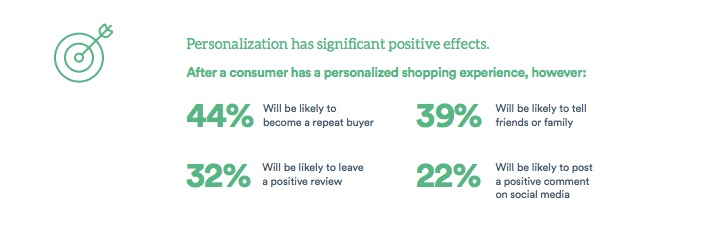
But why does it matter so much, though? Consider the traditional experience of shopping in the digital age: Browse. Click. Add to cart. Repeat.
Yawn.
On the flip side, personalization marketing empowers businesses to form stronger connections with shoppers. Brands should strive to uniquely market to as many individuals as possible rather than take a “one-size-fits-all” approach.
In this guide, we’ll break down six personalization marketing tactics to illustrate how businesses consistently create meaningful experiences for their customers:
1. Recommend Relevant Products You Know Your Customers Want
Personalization marketing is a tactic to make recommendations on products you know your customers want, whether it’s through data analysis or consumer research. That’ why recommendations are arguably the most straightforward way to personalize your shopping experience.
Here’s some food for thought: Salesforce data shows a staggering 26% of ecommerce revenue comes from product recommendations. The takeaway? Customers love to be told what to buy and are highly influenced by peers.
Much like a concierge or store clerk, recommendations provide that much-needed “push” that results in a purchase. Recommendation engines like Amazon and Google product display ads are the bread and butter of today’s ecommerce product discovery. This is true for brands, including those based on previous purchases.

Recommendations shouldn’t be reserved for post-purchase interactions, though. By organizing your product catalog and tags, you present recommendations while visitors are in “just browsing” mode. Here’s a great example from J. Crew:
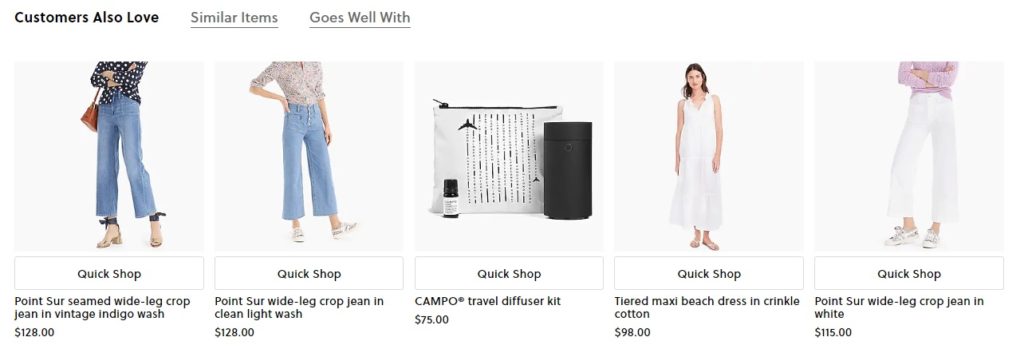
Connect the Dots With Product Recommendations
The same rules apply to email too. Even without a full-blown recommendation engine, you also highlight your best sellers and popular products among your customers to create a sort of bandwagon effect.
This could be done in a post-purchase email or even private email only for exclusive customers who bought a specific product. The point is to let them know they’re exclusive and you’re recommending X because they bought Y.
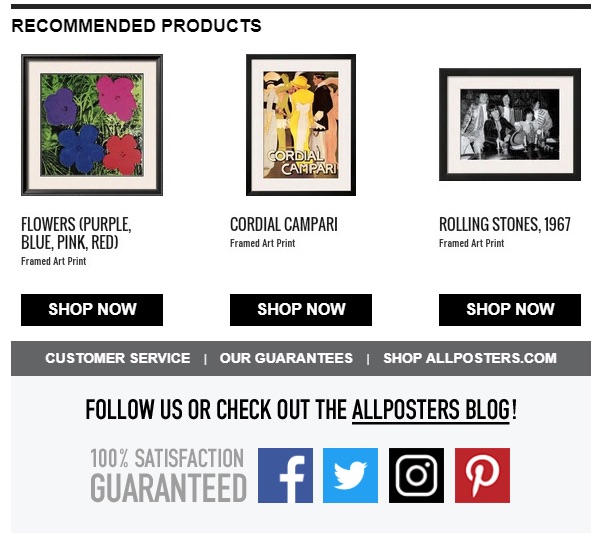
Oh, and let’s not forget emerging trends in personalization marketing such as customer quizzes. Serving as an interactive way to gather invaluable customer feedback, quizzes give shoppers exactly what they want through carefully curated answers.
For example, Birchbox’s “Beauty Profile” quiz ensures every product included in their subscription package is relevant to their subscribers. This is huge for consumers who don’t have time to sort through products and find something specific to them.
Now, that’s your job.
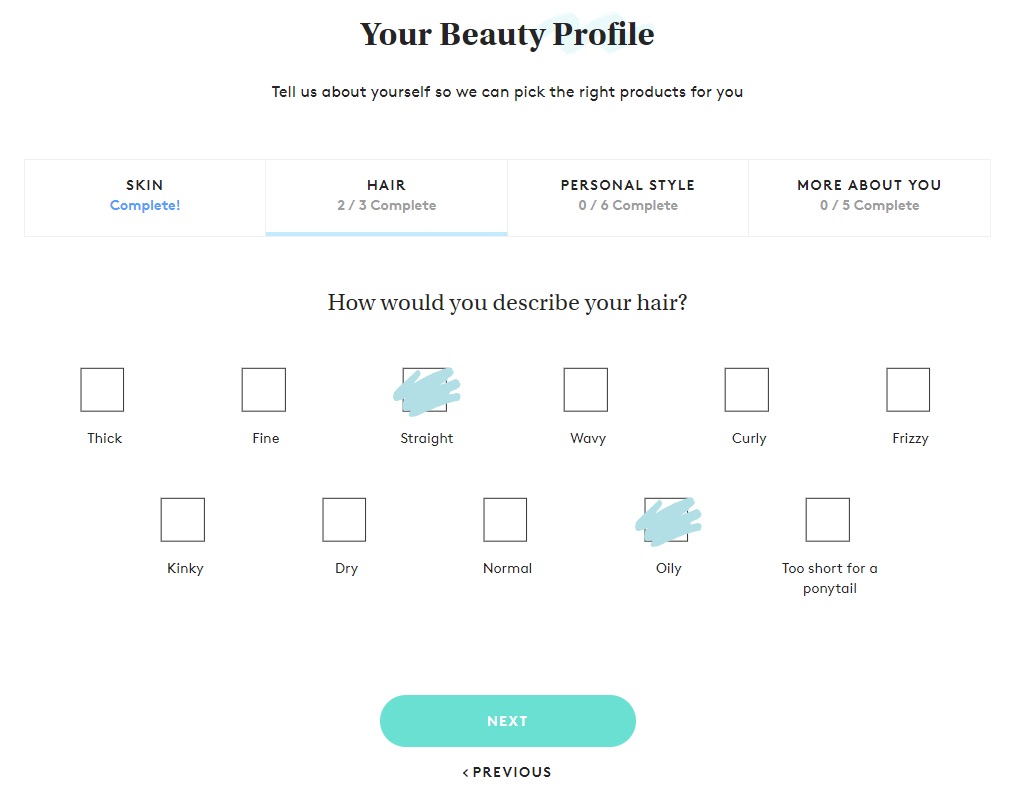
Based on the results, quiz-takers are sent to a recommendations page. Then the shoppers will have their boxes customized accordingly to their answers. This not only breaks down preferred products, but it makes the customer experience that much better.
Your shoppers aren’t always as confident in their purchasing decisions as you think. So provide them with tailored recommendations on products based on customer surveys or quizzes so their search turns into something like this:
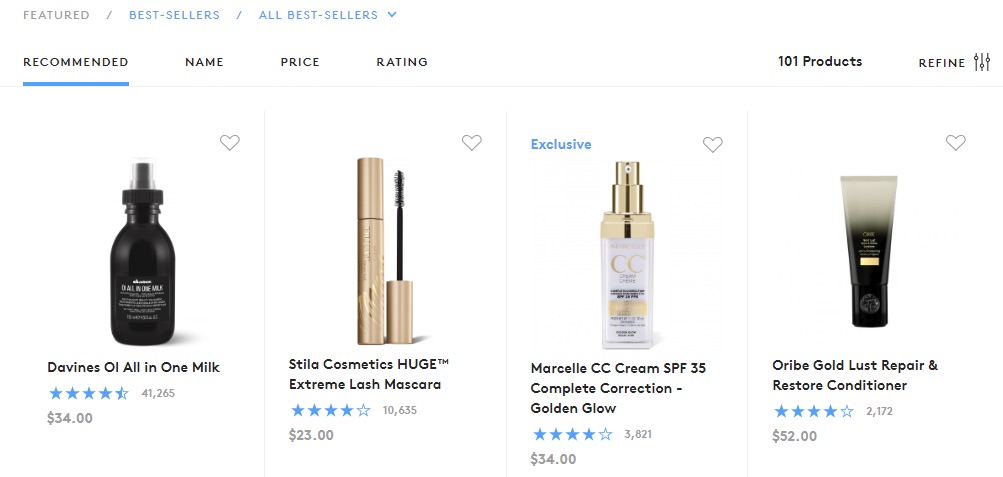
See how that works?
2. Give Your Offers a Personal Touch
According to Campaign Monitor, personalized emails result in significantly higher click-through and transactional rates. No surprise there, right?
Let’s say you have a customer repeatedly buy boots from your ecommerce store. Wouldn’t it make sense to offer them the occasional discount on, you know, boots as opposed to cashmere sweaters?
Sure, there’s a time and place for store-wide deals. However, segmenting your offers by individual trends and buyer behaviors is a smarter move toward an easier path to purchase.
Another common tactic for personalization marketing is through cart abandonment or behavior-triggered email marketing campaigns. Here’s an example from TeePublic which includes a “They Miss You” message attached to some previously viewed items.
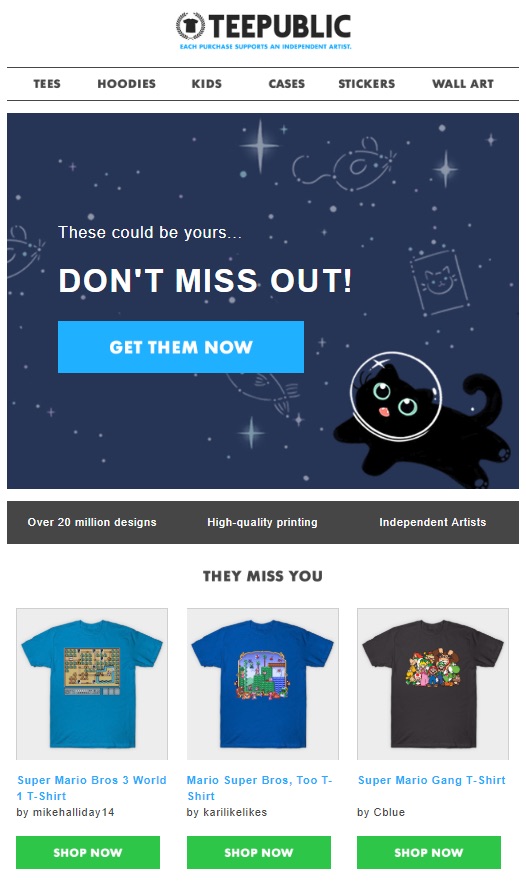
Another low-hanging personalization marketing strategy is to present your shoppers as a community. Like we mentioned earlier, exclusivity is something shoppers often want.
This works for you because you’re not only creating an personalized experience, you’re also driving urgency to buy. In fact, the “email subscriber exclusive” message from Sierra is a good example. It creates a sense of exclusivity for buyers as if they’re “in the know.”
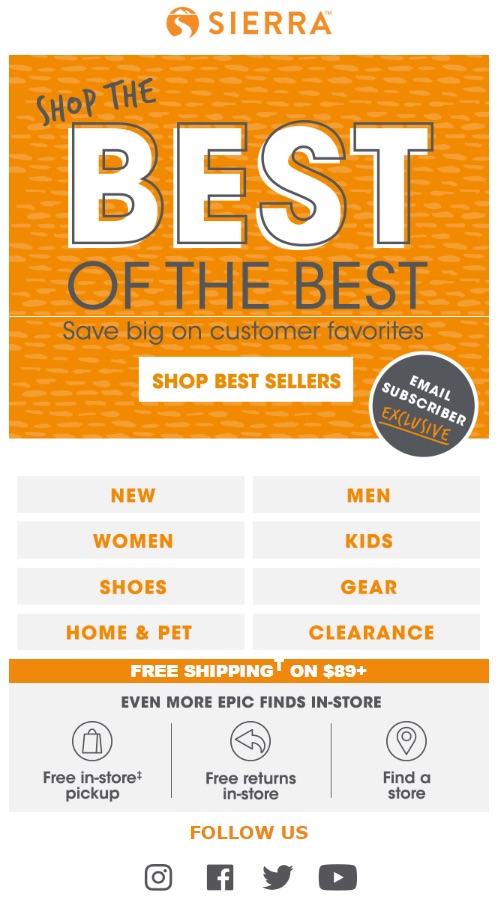
And of course, personalization marketing means treating people like people. Along with your brand voice, messages that celebrate your customers and show your appreciation (think: birthday, customer anniversary), are an awesome tactic to create a stronger sense of brand loyalty.
Check out how TopShop does it through an exclusive birthday offer.
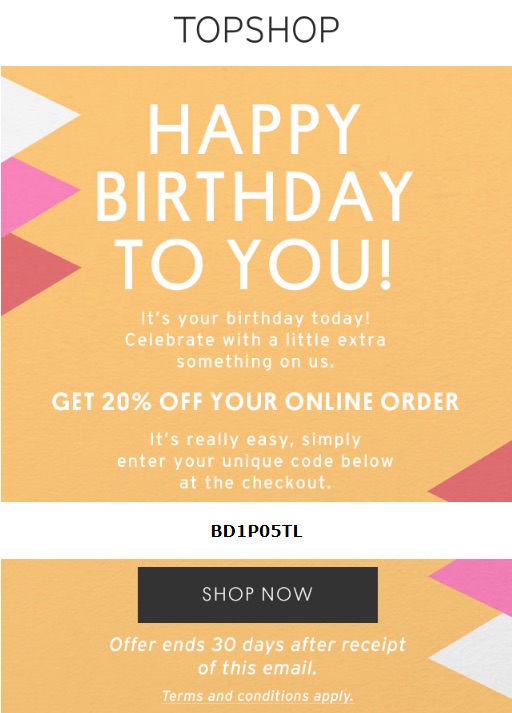
3. Promote the Products People Truly Want the Most
This might seem like a no-brainer. But as you saw from the first data points in the Segment report, businesses don’t always deliver products and experiences their customers want. Think about it. Do businesses create products on a whim? “Just because?”
Absolutely not.
Perhaps the best way to vet your product ideas is by listening to what your customers are saying. This email from Pendleton highlights how brands can market their products based on demand.
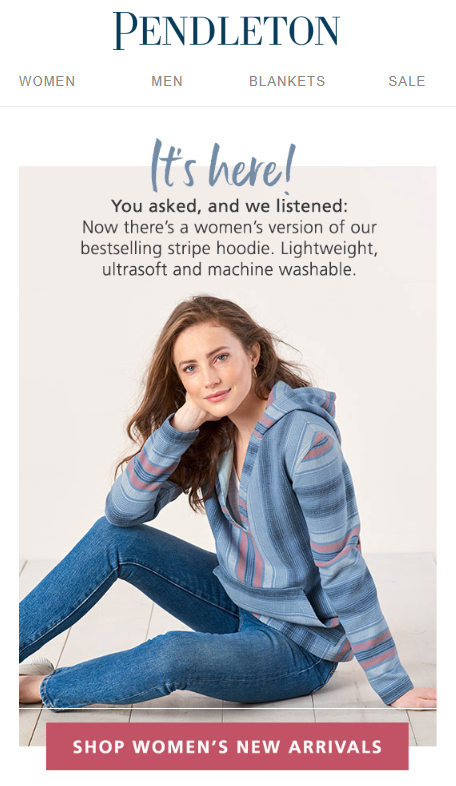
Of course, this begs the question: how do you listen for what your customers want, anyway? Dig into your customer feedback to see what your customers are already telling you. From reviews content to social comments, there’s a gold mine of product insights to take your items to the next level.
Tools like PowerReviews’ Product Pulse does all the hard work of digging through your content and finding customer comments that matter the most. This includes specific keywords, product features or even adjectives associated to your products that could help you create a more personalized marketing strategy.

Above all, these insights are invaluable for figuring out what your business should promote next. Don’t do the manual work of looking through hundreds of product reviews. Instead, use Product Pulse to analyze your content and uncover insights you might have originally missed or been previously bias to.
4. Understand Your Customer Journey All the Way Through
It might be cliche to say no two customers are the same. But isn’t there a truth to that statement?
From the channels where shoppers discovered you to the ease of their checkout process, it’s paramount that all of your customers have a positive shopper experience from Point A to Point B. But with only 8% of consumers believing brands deliver “incredible” customer experiences, it’s clear that most businesses fail to leave a consistently positive impression.
Being able to see the whole picture does a lot for brands and retailers wanting to improve the customer journey. That’s why tools such as Journey IQ are a game-changer. By turning mystery shoppers into product insights specialists, you pick the brains of your customers and what they think of your shopper experience. 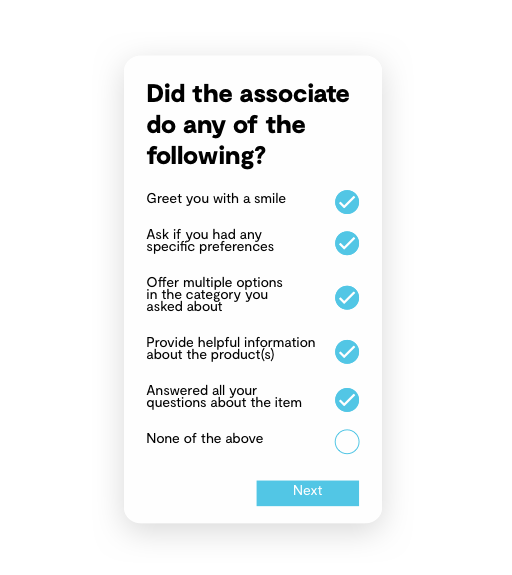
JourneyIQ incentivizes customers who already shop with you to fill out questionnaires, go on search missions and provide helpful feedback to the in-store or online experience. By selecting a specific audience, you have better details of what your shoppers experience in real time.
In such a competitive retail landscape, customer experience personalization is a must. This again speaks to the importance of gathering as much customer data as possible from flesh-and-blood customers.
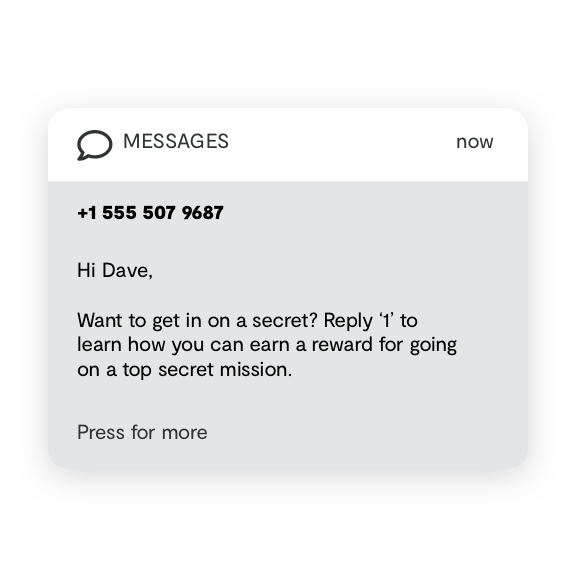
Similarly, brands should keep an eye on their ecommerce and Google Analytics data to see where there might be drop-off points. If someone’s failing to convert from a particular channel or at a certain point in your funnel, it’s worthwhile to investigate why.
Such detective work might be just what you need to create a better experience for shoppers.
5. Curate as Much Customer Feedback as Possible
Piggybacking on some of the tips above, personalization marketing oftentimes involves picking your customers’ brains. Although analytics data and buying behavior are invaluable, so is good, ol’ fashioned feedback.
https://www.instagram.com/p/BwDSh7VHQy8/
For starters, consider some straightforward strategies to figure out what your customers want on a community-wide or individual level. How do you get this information? Well, it’s actually pretty easy and we’ve already mentioned a few ways earlier!
Try to collect information through:
- Social questions: This includes Q&A posts, asking customers to highlight their favorite products or what they want to see from you next.
- Email surveys: Whether it’s a formal survey or an informal check in, asking for feedback in exchange for a discount is totally fair game.
- Quizzes: As noted earlier, quizzes offer direct answers from your customers regarding what they want and more.
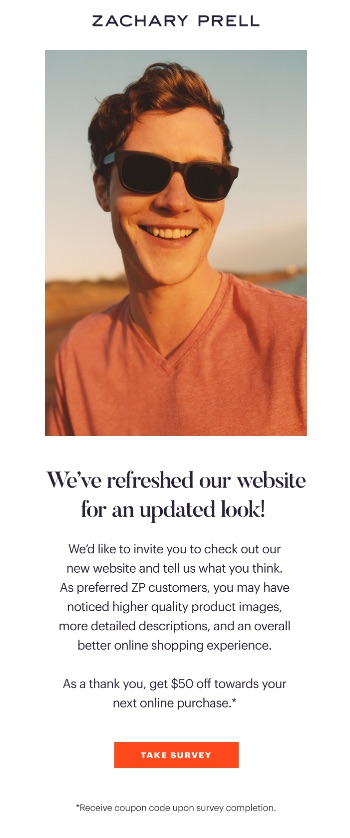
Brands shouldn’t be shy about asking for feedback, either. The majority of consumers are more than happy to provide information to businesses if it ultimately results in a better experience. It’s just a matter of asking.
6. Adapt to Your Customers’ Schedule
Timing is an aspect of personalization marketing that’s easy to overlook. Your customers aren’t “on” around the clock, day after day.
Perhaps you’re all about seasonality. Maybe you sell big-ticket items that are prime for “one-and-done” buyers with serious consideration. Regardless of your target audience, you need to reach out to them when they’re in the mood to buy.
For example, consider the top spending events such as the winter holiday season.
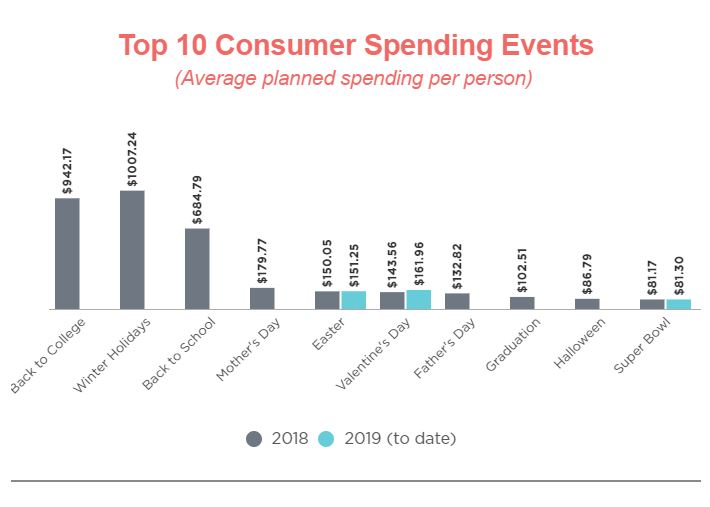
There’s no use hitting folks with deals when they’re “cold.” Timing is a subtle yet significant aspect of giving your customers what they want. But a not-so-subtle aspect of scoring more sales is when your customers are most active.
Especially considering how crowded the ecommerce space is, data-driven timing is absolutely key to making your offers stand out. That’s why tools that perform scheduling optimization are so popular.
For example, MailChimp has it’s optimized timing feature that allows businesses to target individual members of their list based on when they’re most likely to be active. This makes targeting that much easier.
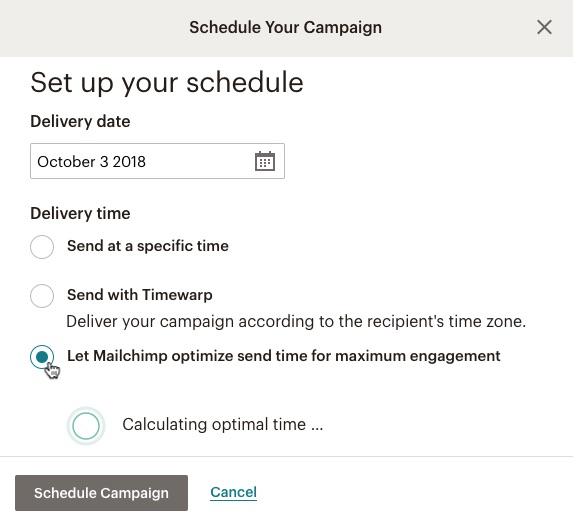
This is crucial for businesses with customers across multiple timezones. After all, who wants to get an offer in the dead of night? Spoiler alert: nobody.
On a related note–timing is key for businesses looking to roll out any sort of social ad strategy. Although remarketing ads like those on Facebook are popular as they create another valuable touchpoint with your customers, they still need to be timed to perfection.
Don’t neglect features such as campaign budget optimization, which does the legwork of figuring out when your audience should see them.
And with that, we wrap up our guide!
What Personalization Marketing Tactics Matter Most to You?
Examining behavior. Gathering data. Curating feedback.
These are the steps that businesses today need to take if they want to create meaningful experiences for their customers. Listen: personalization marketing isn’t just a buzzphrase. Customers still crave the personal touch of old-school brick-and-mortar stores even as ecommerce booms.
Are you greeting them at the proverbial door? Offering service with a smile? Pushing them to purchase when they have doubts? If not, you definitely need to be!
Thankfully, modern tools and analytics make the process of creating positive customer experiences so much easier. And by combining the tactics above and taking advantage of the features baked into PowerReviews’ platform, you can start getting personal with your buyers sooner rather than later.
See how our tools help businesses of all sizes manage customer feedback and surface important product insights. Request a demo today!





